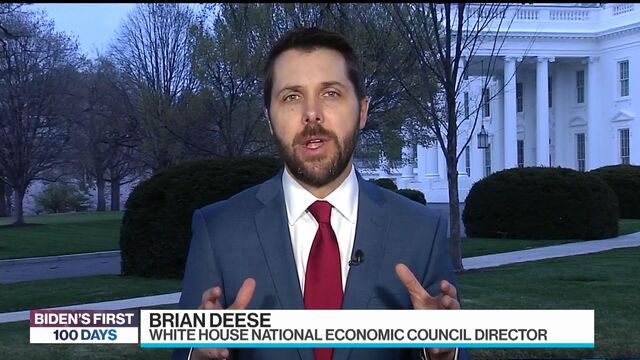mivo.indah.link
President Biden Joe BidenThe Hill's Morning Report - Biden seeks expanded government, tax hikes Five things to watch on Biden infrastructure plan GOP seeks new line of attack on Biden economic plans MORE's $2 trillion infrastructure proposal unveiled Wednesday includes a suite of measures to fight climate change, including billions to transition to electric vehicles (EVs), retrofit buildings, replace lead pipes and modernize the nation’s electrical grid.
Joe BidenThe Hill's Morning Report - Biden seeks expanded government, tax hikes Five things to watch on Biden infrastructure plan GOP seeks new line of attack on Biden economic plans MORE's $2 trillion infrastructure proposal unveiled Wednesday includes a suite of measures to fight climate change, including billions to transition to electric vehicles (EVs), retrofit buildings, replace lead pipes and modernize the nation’s electrical grid.
The infrastructure package includes numerous proposals that were rolled out as part of Biden’s climate plan during his 2020 campaign, including $174 billion to “win the [electric vehicle] market,” and billions to boost cities’ defenses to extreme weather caused by climate change.
The White House framed the package as a way to “unify and mobilize the country to meet the great challenges of our time: the climate crisis and the ambitions of an autocratic China,” a push back against a nation that has made headway in the green market.
The bill provides funding to boost the country's production of electric vehicles and transition to this form of transportation. Biden has already called for the federal government to boost its procurement of electric vehicles, but the package pushes efforts that would help make EV ownership more viable for the average consumer.
The infrastructure package includes incentives with a goal of 500,000 EV chargers by this decade's end and electrifying no fewer than 20 percent of the nation’s school bus fleet. The plan also sets a goal of replacing 50,000 diesel transit vehicles with electric.
“These investments will set us on a path to 100 percent clean buses, while ensuring that the American workforce is trained to operate and maintain this 21st century infrastructure,” the report states.
Those investments are paired with funds for high-speed rail and public transit. Public transit in particular has seen funding plummet amid the coronavirus pandemic as a result of remote work and social distancing measures.
Biden’s plan also calls for significant investments to reduce pollution from buildings, calling for retrofitting 2 million homes and commercial buildings.
The retrofitting policy was one of the cornerstones of the Green New Deal, which called for a more ambitious 10-year mobilization to upgrade all homes and would require weatherizing 8 million homes a year.
The legislation would include $180 billion to “establish the United States as a leader” in green technology and other research and development efforts — something Biden has argued will create jobs down the line.
It also includes $100 billion to improve electric grid resilience, including an investment tax credit aimed at creating incentive for building out at least 20 gigawatts of high-voltage lines.
The package would also create a Grid Deployment Authority within the Department of Energy that “allows for better leverage of existing rights-of-way – along roads and railways – and supports creative financing tools to spur additional high priority, high-voltage transmission lines,” according to a White House fact sheet.
The bill would also establish an Energy Efficiency and Clean Electricity Standard, with a goal of reducing both the cost of and pollution from electricity, according to the White House.
“All of this will be done while ensuring those facilities meet robust and rigorous standards for worker, public, and environmental safety as well as environmental justice – and all while moving toward 100 percent carbon-pollution free power by 2035,” the White House said.
The package also includes funds to “eliminate all lead pipes,” including an estimated 6 million lead service lines that run water into people’s homes.
A fact sheet from the White House does not spell out a time frame for replacement. The current plan finalized under the Trump administration is expected to phase out lead pipe replacement over 30 years.
Another provision of the package would address so-called orphan oil and gas wells, which the Biden administration described as a major source of safety and environmental hazards, particularly to underserved, rural communities. The plan would put $16 billion toward plugging those wells and the cleanup of abandoned coal and uranium mines.
The package has won praise from environmental and sustainability advocacy groups following the release of the White House summary.
“The President's infrastructure plan would not only rebuild our highways, bridges and water systems to be more sustainable and resilient, it would foster new innovation in clean energy technologies, expand clean transportation options, and power a recovery that lifts up those who are most affected by climate change,” Anne Kelly, vice president for government affairs at the sustainability nonprofit Ceres, said in a statement Wednesday.
Other organizations, however, called the plan insufficient on climate and energy issues.
“President Biden’s industry-friendly infrastructure plan squanders one of our last, best chances to stop the climate emergency,” Brett Hartl, government affairs director at the Center for Biological Diversity, said in a statement.
“Instead of a Marshall Plan approach that moves our economy to renewable energy, it includes gimmicky subsidies for carbon capture, fantastically wishes the free market will save us, and fails to take crucial and ambitious steps toward phasing out fossil fuels. Biden has pledged to cut carbon emissions 50% and decarbonize our electricity sector, but this proposal won’t even come close.”
Let's block ads! (Why?)
"electric" - Google News
March 31, 2021 at 10:08PM
https://ift.tt/3fz9gcP
Biden infrastructure plan includes billions for electric vehicles, building retrofitting | TheHill - The Hill
"electric" - Google News
https://ift.tt/2yk35WT
https://ift.tt/3bbj3jq
















/cdn.vox-cdn.com/uploads/chorus_image/image/69047070/Kia_EV6_GT_line_4.0.jpg)
:no_upscale()/cdn.vox-cdn.com/uploads/chorus_asset/file/22407216/Kia_EV6_GT_2.jpg)
:no_upscale()/cdn.vox-cdn.com/uploads/chorus_asset/file/22407213/Kia_EV6_GT_Interior_2.jpg)